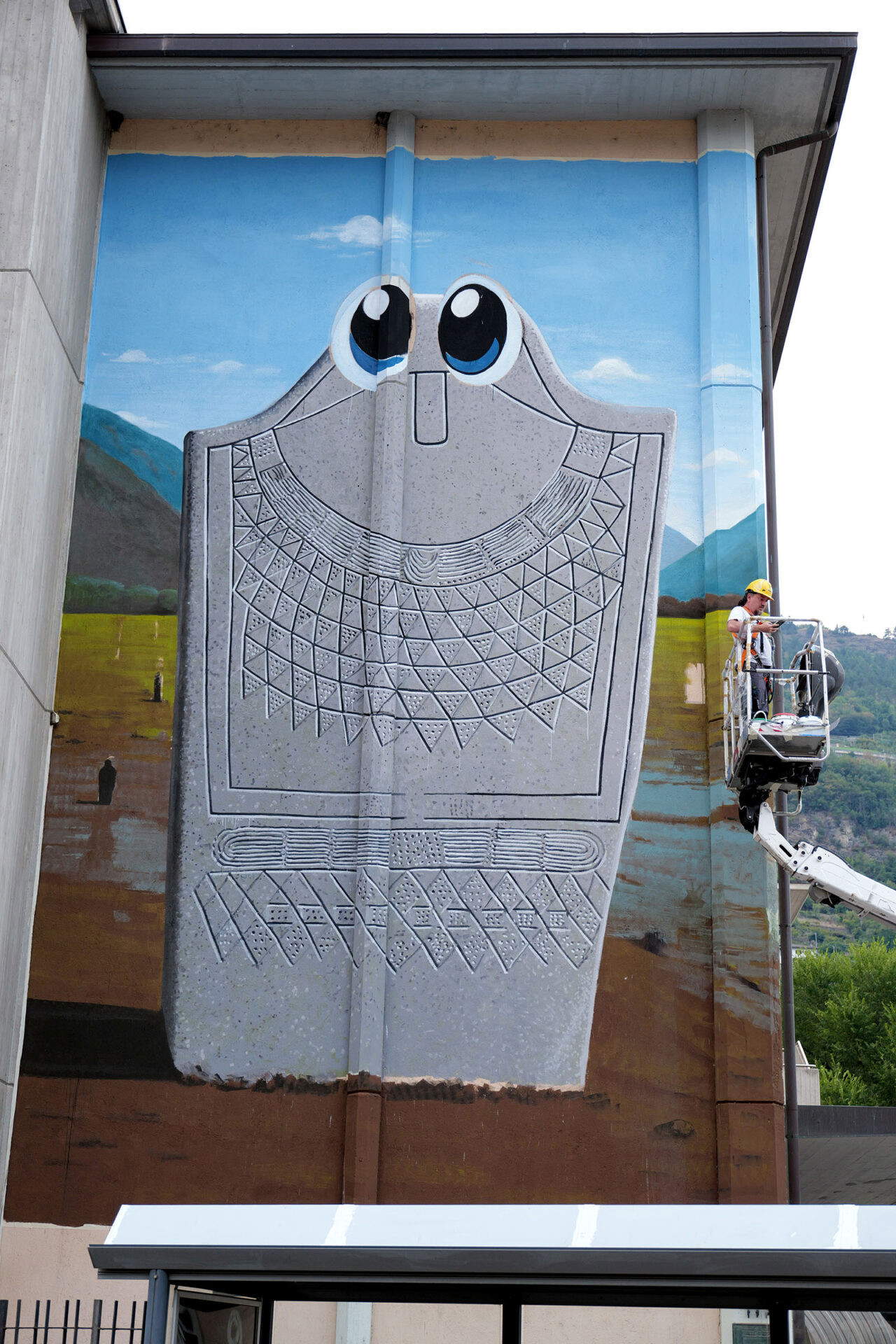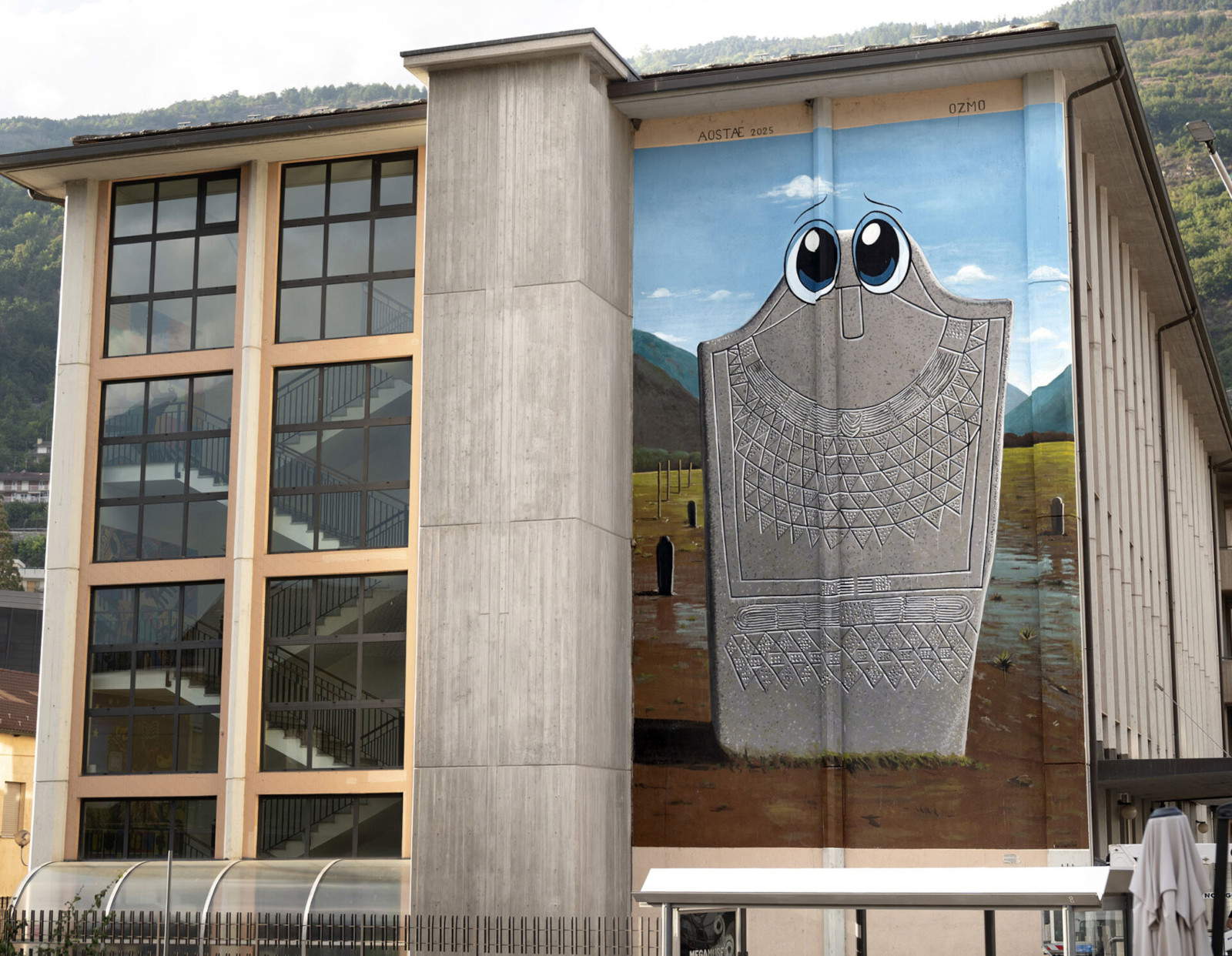It is Stele 3 South, the anthropomorphic stele dating back to the third millennium B.C. kept at the MegaMuseum - Contemporary Archaeological Museum of Aosta, the protagonist of the new mural work created in Aosta by street artist Ozmo (Gionata Gesi, Pontedera, 1975). The mural stands out on the wall of the Cerlogne School, in Corso Saint Martin de Corléans, in the heart of the megalithic area that represents one of the oldest symbolic and spiritual testimonies in Europe.
The stele, recognizable by its diadem, decorated bodice, five-fingered arms, belt, and robes, was chosen by Ozmo from among the numerous specimens preserved in the museum: he first reconstructed it digitally with the help of Artificial Intelligence, and then depicted it as if it had just been sculpted, still immersed in its original context.
Thus the stele becomes a bridge between distant eras and offers children and young people a chance to reconnect with the city’s prehistoric roots.
“Mine is a poetic reconstruction, not a scientific one,” Ozmo clarifies.“ ”It is the result of site-specific research, comparisons with guides and museum management, but designed to speak to the present. The work invites the reconnection of contemporary art with ancestral memory, transforming urban space into a place of dialogue with deep time."

The mural is part of the initiatives promoted by the City of Aosta as part of AOSTAE 2025, the program celebrating the 2050th anniversary of the city’s founding. The project had already started with the work dedicated to Janus Bifrontes on the “Giovanni Pezzoli” Primary School on Paris Street. Ozmo devised a cycle of street art works to translate Aosta’s historical, geographical and cultural complexity into a contemporary language, creating the murals on significant buildings in the urban fabric.
The murals, connected by a common narrative thread, reflect three identity dimensions of the city: the alpine landscape (nature), prehistoric memory (past), and the frontier condition (identity). The intervention is thus not limited to an isolated work, but takes the form of a diffuse direction, inviting the viewer to recompose the fragments into a unified narrative.

 |
| Aosta, unveiled the anthropomorphic stele of Ozmo |
Warning: the translation into English of the original Italian article was created using automatic tools. We undertake to review all articles, but we do not guarantee the total absence of inaccuracies in the translation due to the program. You can find the original by clicking on the ITA button. If you find any mistake,please contact us.